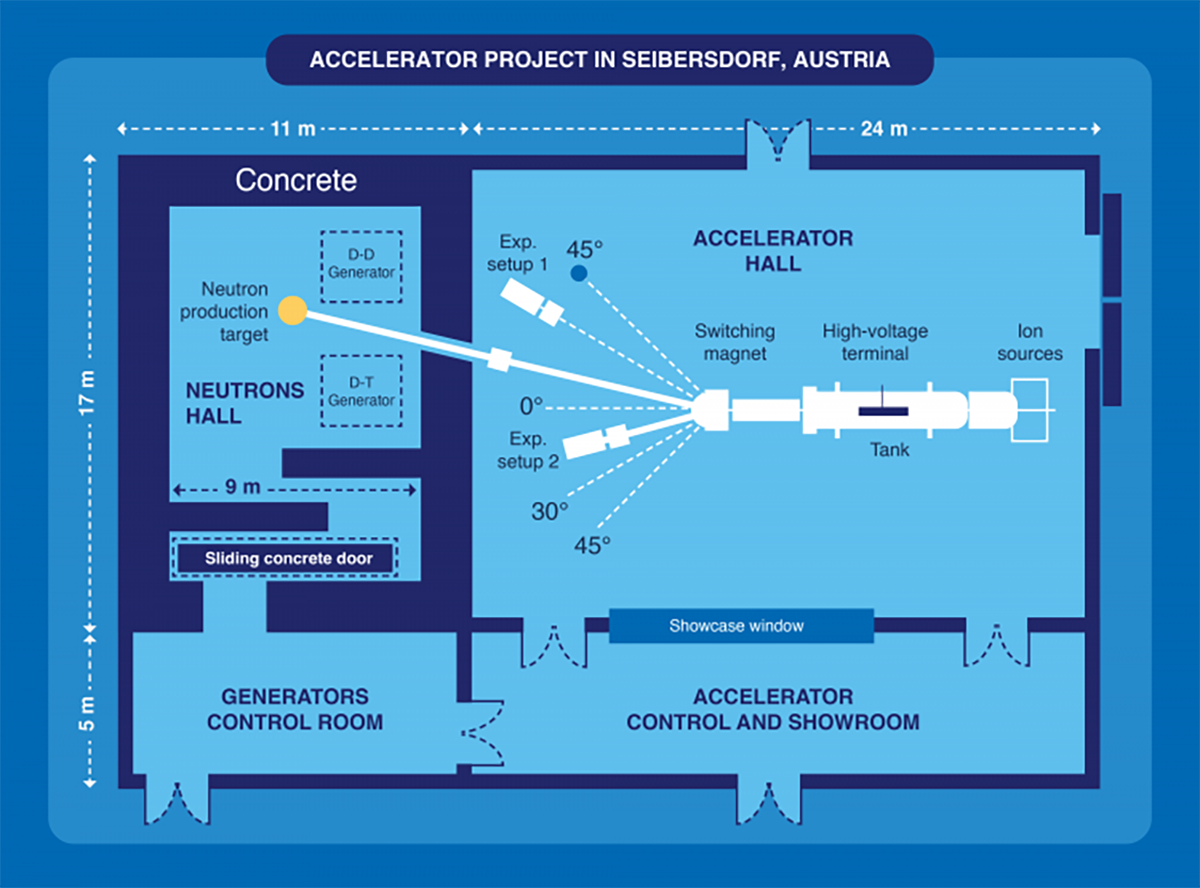
If you would like to learn more about the IAEA’s work, sign up for our weekly updates containing our most important news, multimedia and more.
What you need to know about ion beams
Puja Daya, Sotirios Charisopoulos

Whether it is determining the origin of pollutants, characterizing contaminants in food, imaging individual biological cells or putting a date to historical objects, scientists use ion beams to help give us answers. But what are ion beams and how are they used?
Ion beams are, as their name suggests, streams of electrically charged atoms. The ions in a beam are produced by special instruments called ion sources. They gain speed when entering an electric field, which is produced in a particle accelerator, and are steered and focused by magnetic fields to travel in parallel trajectories inside a vacuum in a metal tube. Depending on the type of accelerator, ion beams can be accelerated at a velocity close to the speed of light.
“ Particle beams are unique probes that can be used not only to better understand the universe, but also to analyse and take advantage of physical processes capable of improving life and support economic growth.
In the case of tandem electrostatic accelerators (see figure), ion beams are bombarded into a material sample or object. The interaction with the material can force the ions in the beam to change course, or the collision can cause particles or radiation to be released, mainly in the form of X-rays or gamma rays. This radiation can then be detected and analysed.
The properties of the energy and of the emitted radiation reveal details about the composition of the bombarded sample, such as whether it is crystalline or not, its hardness, and physical properties which are of interest for emerging technologies. Bombarded sample materials or objects may also vary in shape and phases of matter, and can be thin foils; small pellets of soil; human, animal or plant cells; seeds; rocks; liquids; or even historical artefacts or statues. Depending on the material’s form and composition, bombardment may occur in a vacuum or in air.
Due to their unique analytical and modification capabilities, accelerated ion beams are used in many applications. In plant mutation breeding, ion beams are used to irradiate plant material or seedlings in order to to accelerate their natural evolution process by inducing mutations, to develop higher yielding or disease and drought resistant crops.
Protons and other ions are used extensively to produce the radioisotopes needed to create radiopharmaceuticals for diagnosing and treating cancer. In cancer therapy, proton and carbon ion beams are used to bombard cancerous tumours, especially when no alternative therapy is possible. These beams deliver energy to a tumour to heat it up and disintegrate it.
With increasing demand for stronger and better materials, a wide variety of ion beams are also used to modify material properties, reinforcing their resistance. One example is for spacecrafts or fusion reactors which require materials to operate under harsh radiation environments.
Electron beams
Similar to ion beams are electron beams — a stream of electrons generated by electron sources in a variety of accelerators. They are used to produce X-rays, which in medical therapy are applied to irradiate and destroy cancer cells. Electron beams or X-rays are also employed to irradiate food and kill dangerous bacteria without degrading their nutritional value, quality or taste.
Future IAEA ion beam facility project
Countries around the world can benefit from the use of ion and electron beams, and the IAEA is planning to establish its own state-of-the-art tandem ion beam facility (IBF) in Seibersdorf, Austria. With this accelerator, the IAEA will support research and help educate and train scientists from around the world on the diverse applications of ion beams, including the production of secondary particles as neutrons.
“Particle beams are unique probes that can be used not only to better understand the universe, but also to analyse and take advantage of physical processes capable of improving life and support economic growth,” said Danas Ridikas, Head of the Physics Section at the IAEA. “Particle accelerators are a cost-effective investment to help achieve sustainable development. With a new tandem ion beam accelerator, the IAEA can further help countries to strengthen their capabilities in accelerator technologies and their applications.”
In order for the IBF project to accommodate the tandem accelerator, the required infrastructure and the associated instrumentation, as well as the resources for its operation, the IAEA is looking to raise about €4.6 million.


